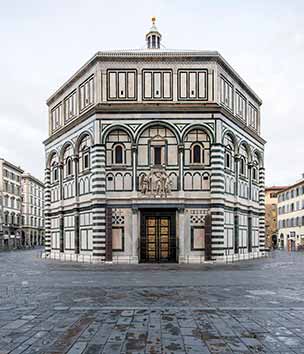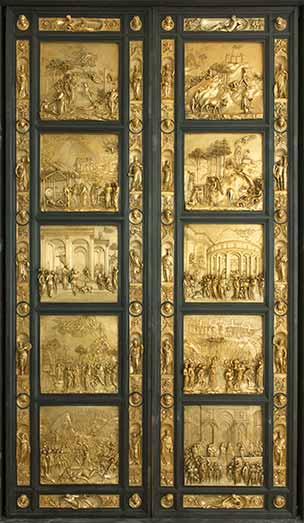Today, due to preservation efforts, the original Gates of Paradise in their restored condition are on view at the newly renovated Museo dell’Opera del Duomo in Florence. Contemporary casts of the doors now stand in the east portal of the Baptistery. These doors, a sister set to those on view at the Nelson-Atkins, were made from the same molds.
The process of creating the original doors was a costly technical feat. In Ghiberti’s time, bronze was more expensive than marble. The precious material was also more difficult to work with because industrial casting processes did not yet exist. To create the doors, Ghiberti used a technique called lost-wax casting, a time-consuming and complex process. First, clay or wax figures were created and translated into molds. Then melted bronze was poured into the molds and cooled.
Once Ghiberti removed the bronzes from the molds, the artist and his assistants created refined details such as patterns in the bronze and other rich surface effects by hammering, carving, and polishing the surface of the reliefs—processes referred to as chasing.
THE ORIGINAL GATES OF PARADISE

The east portal of the Florence Baptistery.

Lorenzo Ghiberti (Italian, 1378–1455). Gates of Paradise, 1425–1452. Gilt bronze. Collection of the Museo dell’Opera del Duomo. Image courtesy Opificio delle Pietre Dure, Florence.